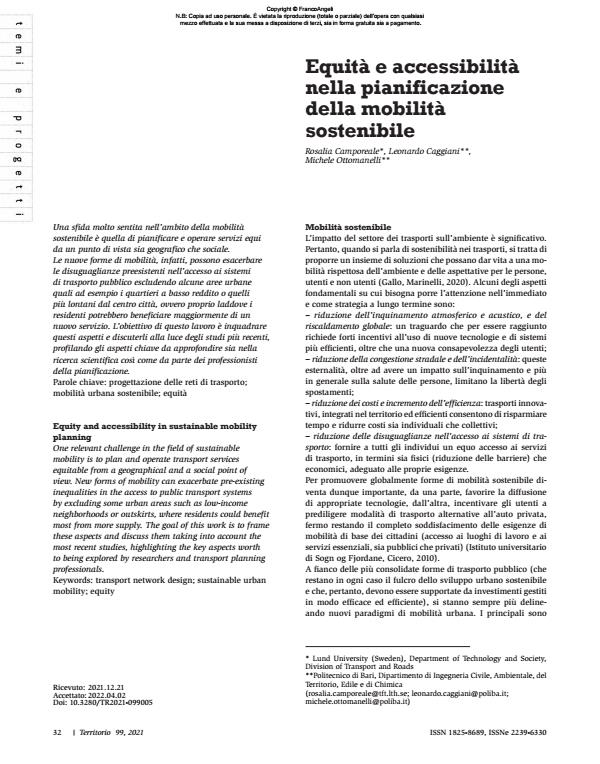Equity and accessibility in sustainable mobility planning
Journal title TERRITORIO
Author/s Rosalia Camporeale, Leonardo Caggiani, Michele Ottomanelli
Publishing Year 2022 Issue 2021/99
Language Italian Pages 8 P. 32-39 File size 171 KB
DOI 10.3280/TR2021-099005
DOI is like a bar code for intellectual property: to have more infomation
click here
Below, you can see the article first page
If you want to buy this article in PDF format, you can do it, following the instructions to buy download credits

FrancoAngeli is member of Publishers International Linking Association, Inc (PILA), a not-for-profit association which run the CrossRef service enabling links to and from online scholarly content.
One relevant challenge in the field of sustainable mobility is to plan and operate transport services equitable from a geographical and a social point of view. New forms of mobility can exacerbate pre-existing inequalities in the access to public transport systems by excluding some urban areas such as low-income neighborhoods or outskirts, where residents could benefit most from more supply. The goal of this work is to frame these aspects and discuss them taking into account the most recent studies, highlighting the key aspects worth to being explored by researchers and transport planning professionals.
Keywords: transport network design; sustainable urban mobility; equity
Rosalia Camporeale, Leonardo Caggiani, Michele Ottomanelli, Equità e accessibilità nella pianificazione della mobilità sostenibile in "TERRITORIO" 99/2021, pp 32-39, DOI: 10.3280/TR2021-099005